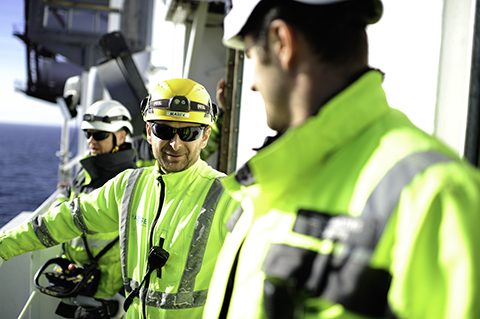
By Hans Peter Johannsen, Vice President, Projects.
This is the second article in our series about reducing the LCoE in the offshore wind industry through optimising turbine loading, transport and installation.
These days, A2SEA is as busy as ever, working through a pipeline of turbine installation projects that shows no sign of slowing down. Such healthy demand is a blessing, of course, but we’re equally lucky in that the purpose-built vessels SEA CHALLENGER and SEA INSTALLER were initially designed to handle not just the installation of turbines, but foundations as well. Why is that so lucky? It’s all about how much they can handle.
When our two second-generation vessels were on the drawing board, the decision was made to build them strong and flexible. A couple of quick facts might illustrate just how much working capacity was built into the original spec:
• The deck could support up to 15 tonnes per square metre, making it one of the strongest vessels in the business.
• The main crane could freely slew 360 degrees, extend over 100 metres and lift 900 tonnes.
Taller and heavier
Going forward, everyone expects turbines to become taller and heavier. Bigger turbines mean more electricity can be generated per turbine, enabling turbine manufacturers to make a major contribution toward reducing the LCoE. By 2020, in fact, we expect the turbine components we’ll be installing to weigh around 550 tonnes – still well under the main crane capacity of our second-generation vessels.
That capacity, it’s worth noting, is about to reduce from 900 to 700 tonnes. It’s not due to some strange law of physics or because even heavy-duty machinery gets tired. Instead, we’re in the process of extending the boom to handle taller turbines. And clearly, as the boom gets longer, lifting capacity reduces, too, but we’re still well within the bounds of future turbine weights.
Future-proofed flexibility
The ‘lucky’ part, therefore, is that our vessels will easily be able to handle installing tall, heavy turbines in 2020 and beyond. This fact, along with other investments we’re able to make in upgrading SEA CHALLENGER and SEA INSTALLER, plays a part in ensuring that the offshore wind industry can make the most of current investments.
But there’s more yet we can do to keep the LCoE down by rethinking the design of our existing equipment and practices. Like increasing payload, for example…
The next post in this series explains how the LCoE of turbine installation can be reduced by focusing on how to grow vessel payloads.
Like this post? Subscribe now and get notified about new content!